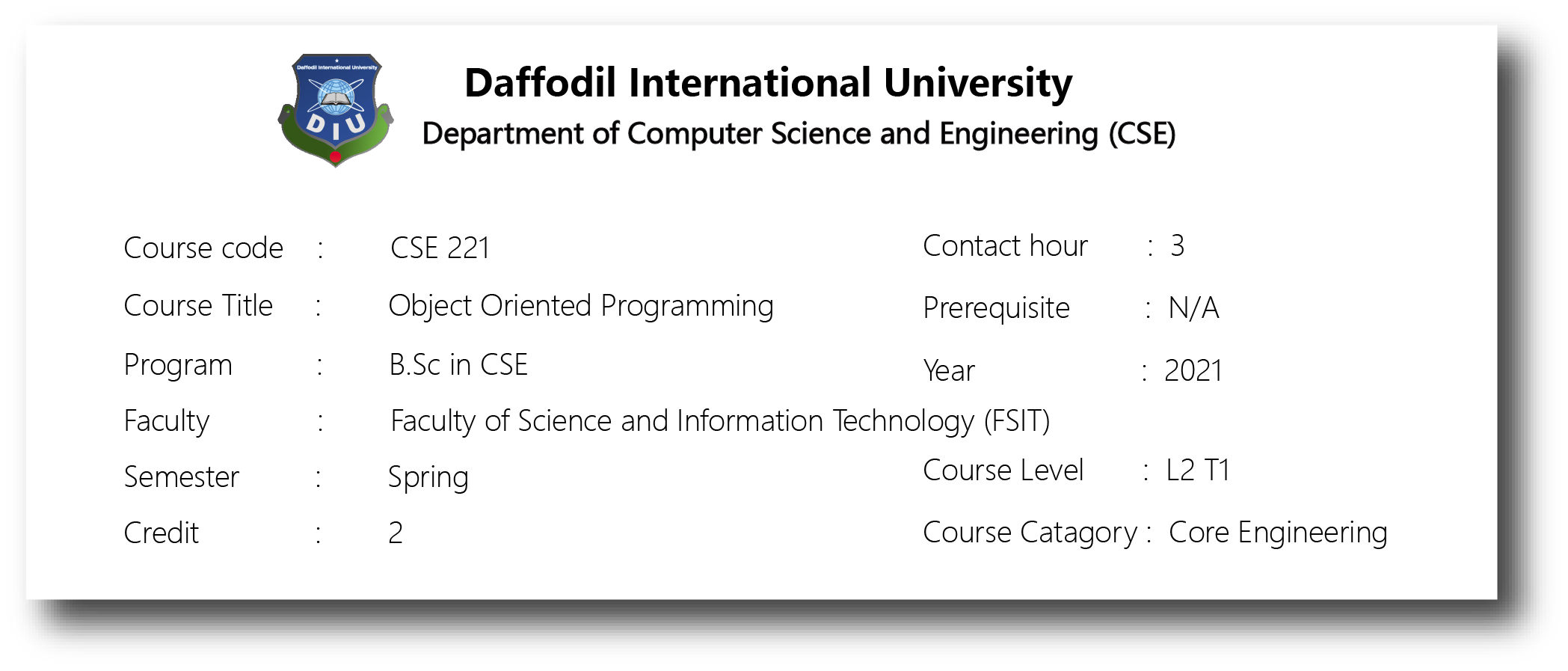Section outline
-

Dear Students,
Welcome to the 2020 Summer Semester!
Welcome back, Students. I can’t wait to see all your smiling faces again! . I am here to support you every step of the way.
I encourage you to make the most of your time here.
Remember to make it a great year. I will see you soon.

Instructor : Md. Zahid Hasan
Office : Level 4, CSE Building, Daffodil Tower Extension
Office Hour : Sunday (14:00/16:00),Thursday (14:00/16:00) or by appointment
Telephone : 01672580748
Email : zahid.cse@diu.edu.bd
Course RationalePhilosophy of Object Oriented Programming (OOP); Advantages of OOP over structured programming; Encapsulation; Classes and objects; Access specifies; Static and non-static members; Constructors, destructors and copy constructors; Array of objects, object pointers, and object references; Inheritance: single and multiple inheritance; Polymorphism: overloading, abstract classes, virtual functions and overriding; Exceptions; Object Oriented I/O; Template functions and classes; Multi-threaded Programming. Memory models, the message based philosophy.
Course Objectives- To be able to identify problems and apply object-oriented programming concept to build information system
- To be able to apply UML notations used in object-oriented applications design.
- To be able to implement common I/O operations using Java
- To be able to implement event-driven graphical user interfaces (GUI) in Java
Course Outcomes (CO’s)
- CO1 Able to identify classes, objects, members of a class and relationships among them needed for a specific engineering problems
- CO2 Able to develop Java application programs using OOP principles and proper program structuring
- CO3 Able to demonstrate the concepts of polymorphism and inheritance
- CO4 Able to apply OOP and Java knowledge in solving problem
[All assessment will be based on onsite/online situation]Grading Scheme Theory Class Lab Class Attendance: 7%
Class Tests/Quizes: 15%
Assignment: 5%
Presentation (using video/ppt): 8%
Midterm Exam: 25%
Final Exam: 40%Attendance: 10%
Lab Performance: 25%
Lab Performance Test: 40%
Lab Report: 25%
TextbookReference Reading Materials
- Introduction to Java Programming
- Fundamentals of OOP and Data Structures
- Unified Modeling Language Distilled
- InfoSys Java Lab Manual
- To be able to identify problems and apply object-oriented programming concept to build information system
